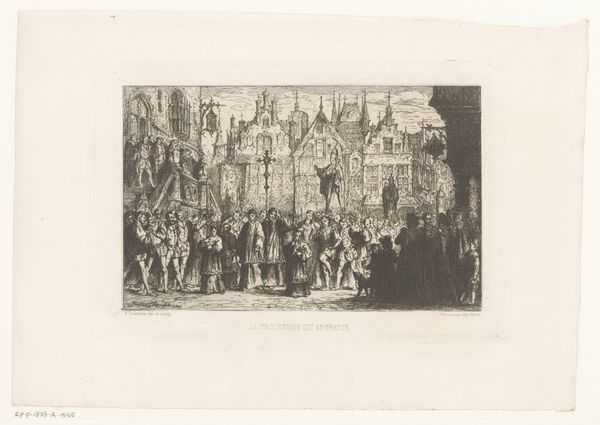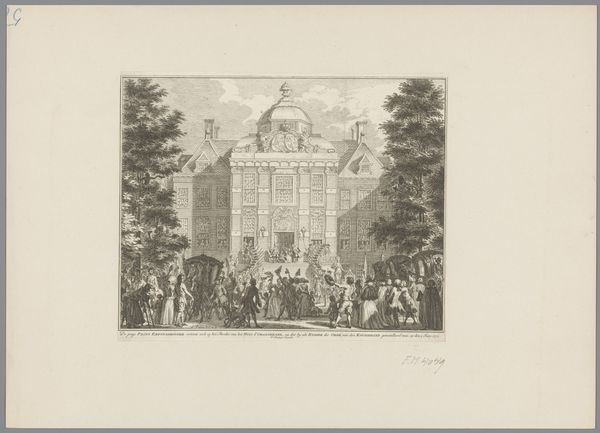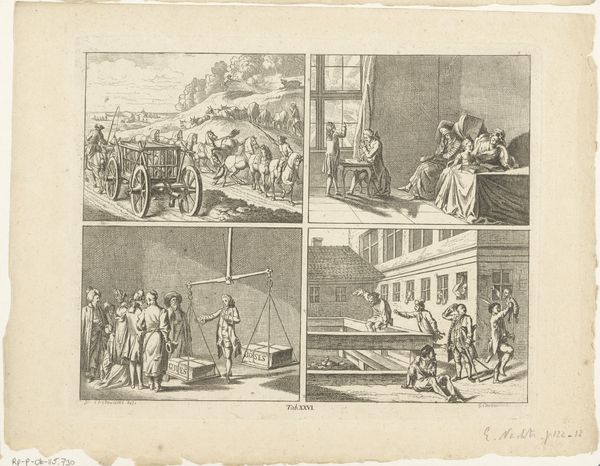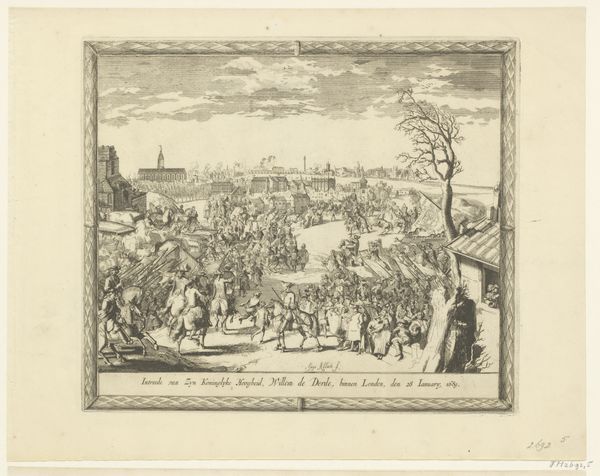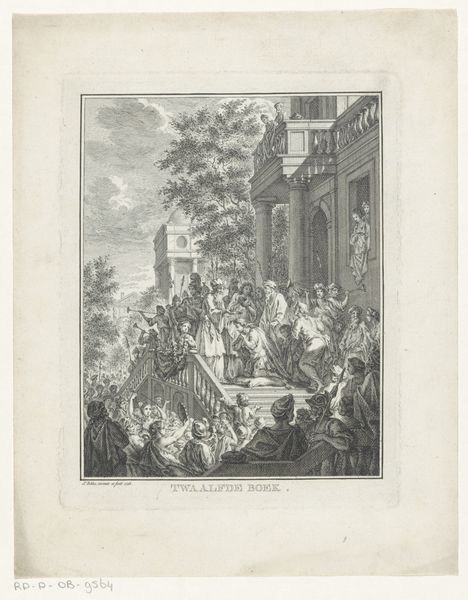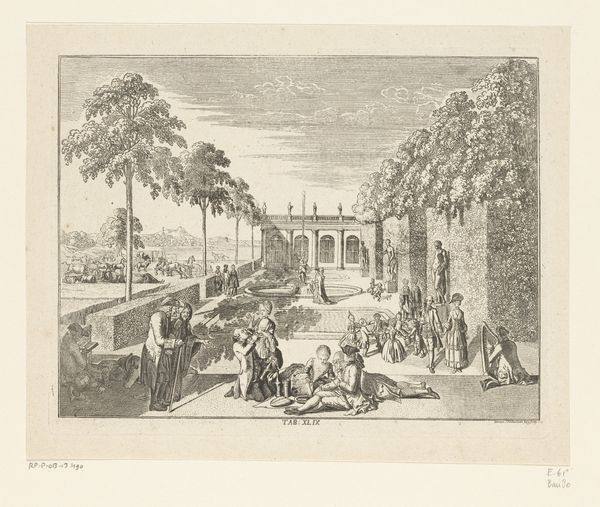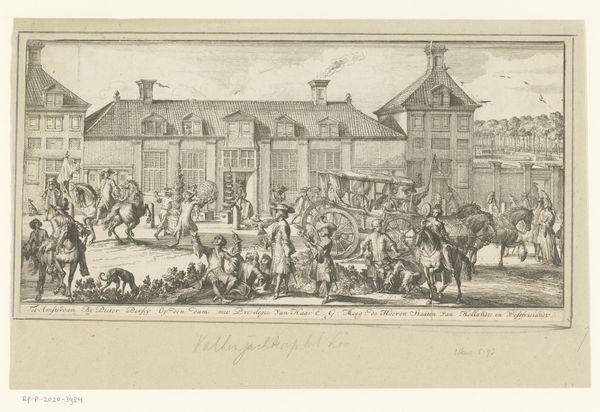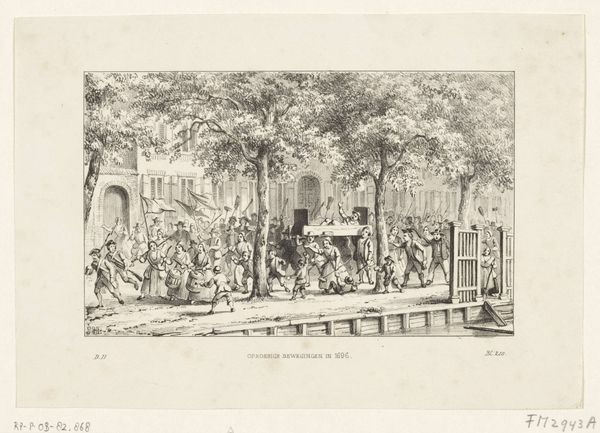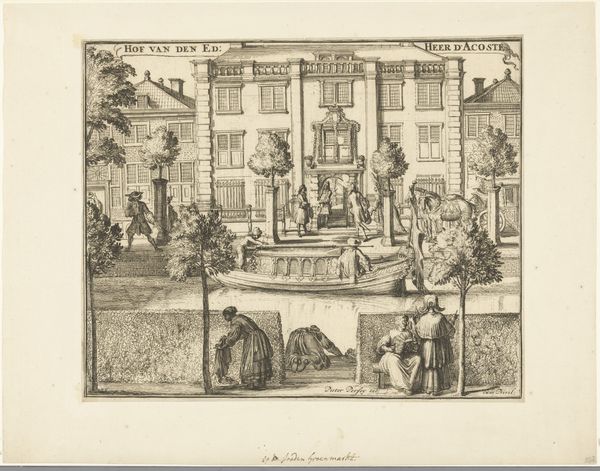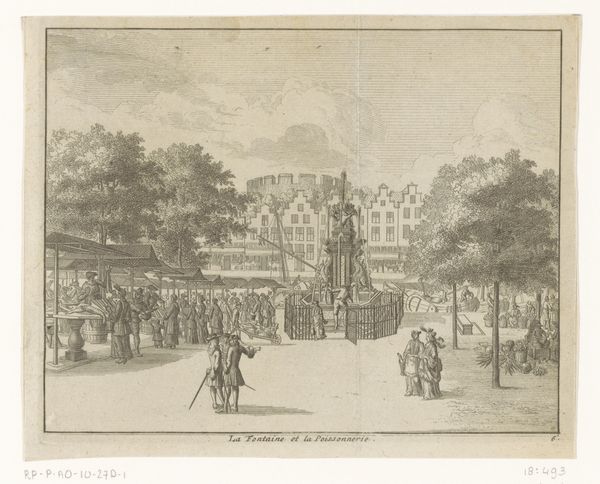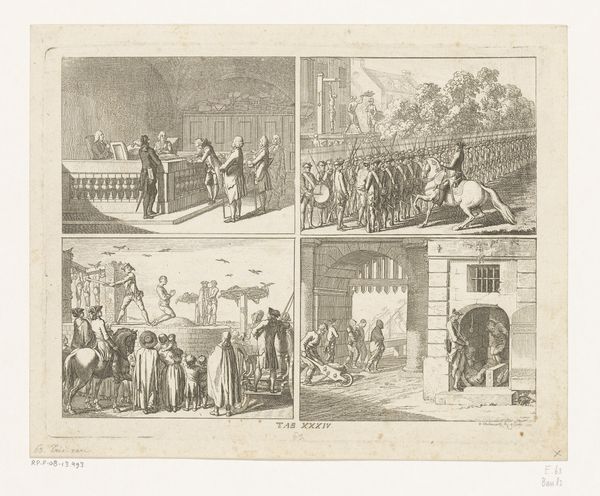
Huis van David de Pinto aan de Sint-Antoniesbreestraat te Amsterdam c. 1695
0:00
0:00
print, engraving
#
baroque
# print
#
landscape
#
cityscape
#
history-painting
#
engraving
Dimensions: height 233 mm, width 278 mm
Copyright: Rijks Museum: Open Domain
Editor: Here we have Romeyn de Hooghe’s engraving from around 1695, titled "Huis van David de Pinto aan de Sint-Antoniesbreestraat te Amsterdam," or "House of David de Pinto on the Sint-Antoniesbreestraat in Amsterdam.” The detail is astonishing, capturing what appears to be a very lively street scene. What strikes you most about this piece? Curator: It’s a fascinating look at the intersection of wealth, power, and public image in Amsterdam at the time. De Hooghe’s work is a deliberate presentation of David de Pinto, showcasing not just his house, but also his social standing. Consider the composition: the grand house looms, yet the bustling street with its classes going about their lives, it brings us to what and whom it relies on. How might this image serve a purpose beyond just documenting a building? Editor: That’s interesting, I hadn’t thought about it that way. I suppose it's a status symbol but it feels almost like propaganda, an advertisement for de Pinto’s prominence? Curator: Exactly. The presence of the Pinto family being charitable further underscores this message. Note the contrast: we have the lavish house, an embodiment of Dutch baroque, alongside figures engaged in work. How does this contrast affect our understanding of the image's purpose and audience? Was this image made to reassure or intimidate its beholders? Editor: So it’s about more than just recording history, it's actively shaping it, it's conveying how de Pinto wants to be viewed by others, the elite and lower classes, how philanthropic and respected he is, almost like constructing his own legacy within the print. Curator: Precisely. It highlights the power of imagery in constructing narratives, showing how the elite controlled their public image through the strategic dissemination of engravings like these. Do you feel that this affects how you view engravings today? Editor: Absolutely, I am so much more aware of the intentions of patrons and creators and that my reading is always shaped by agendas. Curator: And hopefully, this understanding encourages you to question the narratives presented to us through art.
Comments
No comments
Be the first to comment and join the conversation on the ultimate creative platform.
